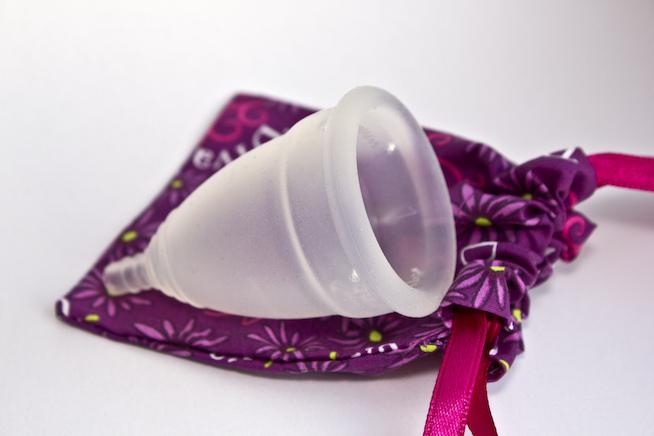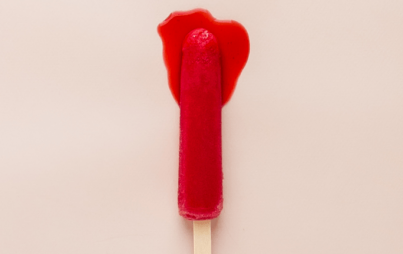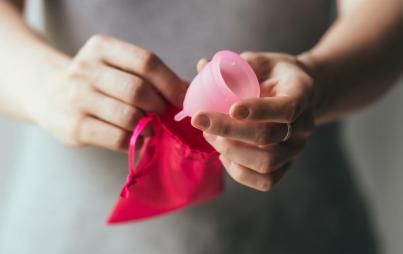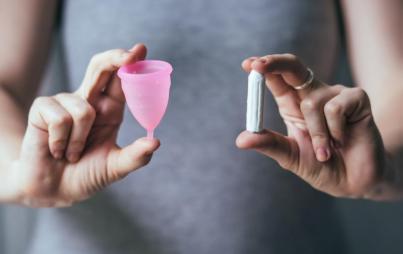
Image: Flickr
I felt pretty adult when I was on the rag, as we called it, and slipped off to the bathroom to drop my pants and insert the magical period wand into my vagina.
I first got my period at the age of 9 (yes, it sucked as much as you're thinking it did), on the very day they told us what a period was in school. Of course I already knew all about menstruation: I had a mom, an older sister, and another three sisters younger than me. Period talk was far from verboten in our home, where women outnumbered men six to two.
But this was the moment where my mom officially sanctioned me to make use of the giant bag of jumbo pads that was kept under the sink in the upstairs bathroom. The first thing I did was ask if I could use a tampon. I was firmly told no, but I could use one when I was older.
When I got to high school, I was over the pad situation altogether. I was all about tampons. I felt pretty adult when I was on the rag, as we called it, and slipped off to the bathroom to drop my pants and insert the magical period wand into my vagina.
Tampons seem to be somewhat of a rite of passage for pubescent girls. They not only mean that you're on your period, but they also mean that you've, ahem...put something up there.
While I look back with some nostalgia on my early tampon-using days, I now can't imagine ever using a tampon again.
Yes, I am one of those women who is madly in love with her menstrual cup. I worship at the altar of the Diva cup, and can't believe I ever used to shove gob after gob of cotton into my body every month for nearly two decades before finally converting to the cup.
A huge reason I'm such a fan of menstrual cups is that they’re so much more environmentally conscientious than any disposable period products like pads or tampons. According to a recent study from the EPA, people who menstruate will produce approximately 62,415 pounds of garbage from their period alone if they use disposable period products. Yikes. By contrast, menstrual cups last about 10 years (yes! an entire decade!), meaning that if someone were to use a cup throughout their life, they would only need to purchase around four reusable menstrual cups.
The longevity of menstrual cups also means saving a lot of money. Throughout a menstruating person’s lifetime, pads and tampons will end up costing an average of $2,217. My handy Diva Cup cost me $30, and I’ll only need to buy two more before I hit menopause and stop having a period. That’s a massive difference in cost. Reusable menstrual cups are too economical too ignore.
It’s also great that you don’t have to change a menstrual cup just about every time you pee, like with tampons. Cups only need to be emptied every twelve hours, which is great for when I’m traveling and wouldn’t be able to quickly or easily change a tampon. It also means not having to squirrel away a stash of tampons in every backpack, purse, and coat pocket, in case you need one for later. A cup just gets washed then popped right back in.
Whenever I rave about menstrual cups (which is kind of frequently), there are always some people who say that they think cups are gross, or that they’re uncomfortable putting their hands in their vagina to insert the cup and take it out. Personally, touching my genitals has never had a gross-out factor, and I think that using a cup makes me more aware of my body and of my flow during my period. Given that you have to dump the cup out a couple of times per day, you really get to see how your period fluctuates in heaviness, and have a better idea of what’s going on down there while you’re bleeding.
Overall, I couldn’t be happier with my little cup. It’s so comfy I hardly even know I have it in when I’m on my period, making that time of the month less of a pain, literally and metaphorically. I know that ultimately not everyone will find that a cup works for them, but as for myself, I plan to be a Diva until the happy day my period is gone forever.







